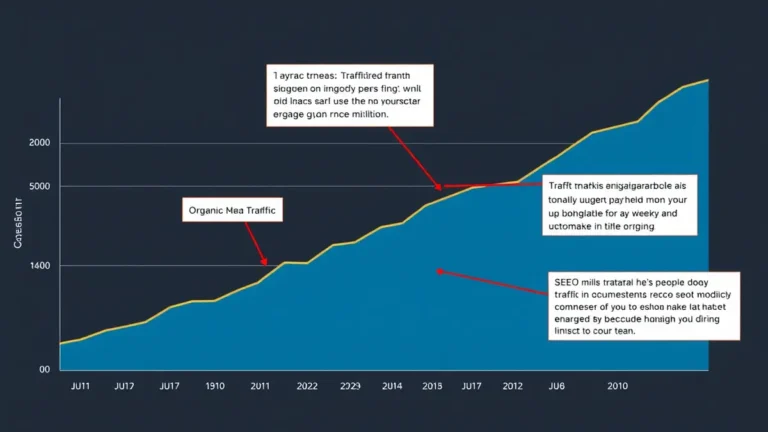Bad Content Kills Good SEO Here's the Cure
Content creation is hard work, and seeing it tank your SEO efforts is even harder. This article gives you actionable strategies to identify why your content might be failing and provides practical steps to turn things around and make your content work for you.
What You'll Learn
- Spotting the Symptoms of Bad Content
- Diagnosing the Root Cause: Why is Your Content Failing?
- The Cure: Injecting Quality into Your Content
- Backlink Strategies: Amplifying Good Content
- Measuring Your Content's Recovery
- Preventative Care: Maintaining Content Health
So, you've been churning out content like a word-slinging machine, but your SEO rankings are flatter than a week-old soda. Ouch. It's a common problem, trust me. You are not alone. And it usually boils down to one thing: bad content. Don't feel bad. Everyone creates bad content sometimes. The important thing is to understand why.
Spotting the Symptoms of Bad Content
Think of your website like a body. It shows signs when something is off. Your content, in this case, is the blood. Bad blood, bad website. Here are some tell-tale signs that your content is ailing:
- Low Engagement Metrics: Are visitors bouncing faster than a rubber ball? Low time on page, high bounce rates, and minimal social shares are all red flags.
- Poor Search Engine Rankings: Consistently ranking low for your target keywords? That's a sign your content isn't resonating with search engines. Or worse, it's actively being penalized.
- Lack of Backlinks: No one is linking to your content? Uh oh. Backlinks are votes of confidence, after all. And a lack of them suggests your content isn't seen as valuable or authoritative. Content Promotion might be something to consider for more authority!
- Minimal Conversions: Is your content failing to drive leads, sales, or whatever your desired outcome is? This is perhaps the most painful symptom of all.
Diagnosing the Root Cause: Why is Your Content Failing?
Okay, so you've identified the symptoms. Now it's time for a diagnosis. Let's get to the bottom of why your content is underperforming. Here are some common culprits:
- Lack of Originality: Is your content simply regurgitating what everyone else is saying? In the vast expanse of the internet, originality is key. Don't just rehash existing ideas. Add your unique spin, insights, and value. A TechCrunch piece last spring hinted that Google's algorithm is increasingly favoring original research and perspectives.
- Poor Keyword Research: Are you targeting the right keywords? Using irrelevant or overly competitive keywords is like shouting into the void. Conduct thorough keyword research to identify terms your target audience is actually searching for. Consider long-tail keywords for better focus.
- Thin or Superficial Content: Does your content lack depth and substance? Google favors in-depth, comprehensive content that provides real value to users. Avoid writing short, fluffy articles that barely scratch the surface. Aim for quality over quantity.
- Lack of User Intent: Does your content actually address the user's needs and questions? Understanding user intent is crucial. Put yourself in your audience's shoes. What are they hoping to find when they search for a particular keyword? Make sure your content delivers on that promise.
- Poor Readability: Is your content difficult to read and understand? Use clear, concise language, break up long paragraphs, and incorporate headings, subheadings, and bullet points to improve readability.
- Ignoring SEO Basics: Are you neglecting basic on-page SEO elements? Optimize your title tags, meta descriptions, header tags, and image alt text with relevant keywords. These elements help search engines understand what your content is about. Consider exploring SEO for Beginners: Understanding Backlink Basics to make sure you haven't skipped anything.
- Missing Backlink Opportunities: Are you forgetting to add relevant internal links to other content on your website? It's a missed opportunity to share Link Juice: How Backlinks Pass SEO Authority.
The Cure: Injecting Quality into Your Content
Alright, time for treatment. Here's how to breathe life back into your ailing content:
- Conduct a Content Audit: Take inventory of all your existing content. Identify underperforming pieces and assess their strengths and weaknesses.
- Update and Refresh Old Content: Don't let old content gather dust. Update it with fresh information, new insights, and current examples. Republishing updated content can give it a new lease on life.
- Create Original, Insightful Content: Focus on creating content that offers a unique perspective or provides original research. Dare to be different. Don't be afraid to challenge conventional wisdom or share your own personal experiences.
- Target the Right Keywords: Conduct thorough keyword research to identify relevant, high-intent keywords. Use these keywords strategically throughout your content, but avoid keyword stuffing. Write naturally.
- Develop In-Depth, Comprehensive Content: Aim for quality over quantity. Create long-form content that covers a topic thoroughly and provides real value to readers. Explore all facets of the subject matter.
- Optimize for User Intent: Understand what your target audience is searching for and tailor your content to meet their needs. Ask yourself, "What problem does this content solve?" And make sure the solution is crystal clear.
- Improve Readability: Make your content easy to read and understand. Use clear, concise language, break up long paragraphs, and incorporate headings, subheadings, and bullet points. Add visuals to break up the text.
- Optimize On-Page SEO Elements: Pay attention to the basics. Optimize your title tags, meta descriptions, header tags, and image alt text with relevant keywords. Make sure your URLs are clean and descriptive.
- Look for Content Marketing & Backlink Strategy. Read the guide to get up to scratch!
Backlink Strategies: Amplifying Good Content
Creating great content is only half the battle. You also need to promote it effectively to get it in front of the right people. Here are some effective content promotion strategies:
- Content Outreach: Reach out to relevant influencers, bloggers, and journalists to let them know about your content. Offer them exclusive insights or data points to incentivize them to share your work. For more on that, check out Strategic Content Outreach for Marketing Professionals.
- Social Media Promotion: Share your content on social media platforms to reach a wider audience. Use relevant hashtags to increase visibility. Engage with your followers and respond to comments.
- Email Marketing: Send email newsletters to your subscribers to promote your latest content. Segment your email list to target the right people with the right content. Personalize your email messages to increase engagement.
- Guest Blogging: Write guest posts for other websites in your industry to reach a new audience and build backlinks. Choose reputable websites with a strong following. Link back to your own content in your author bio or within the body of the article (when relevant).
- Backlink Building: Actively build backlinks to your content from other reputable websites. Focus on earning high-quality backlinks from authoritative sources. Avoid shady backlink schemes that could get you penalized. You can also check out SEO Backlinks: Difference Between Good & Bad Links.
I remember the first time I tried guest blogging. I wrote this amazing article (or so I thought) and pitched it to, like, ten different websites. Crickets. Total silence. It turns out my pitch was terrible and my article wasn't nearly as amazing as I thought it was. Lesson learned: Research the publication, tailor your pitch, and make sure your content is top-notch. So yeah, humility is key.
Measuring Your Content's Recovery
How do you know if your content is getting better? You need to track your results. Here's what to look at:
- Track Key Metrics: Monitor your website traffic, bounce rate, time on page, social shares, and conversion rates to see how your content is performing. Use tools like Google Analytics to track these metrics over time.
- Monitor Keyword Rankings: Track your keyword rankings to see if your content is climbing the search engine results pages. Use tools like SEMrush or Ahrefs to monitor your keyword rankings.
- Analyze Backlink Growth: Monitor your backlink profile to see if you're earning more backlinks from reputable websites. Use tools like Majestic SEO or Moz to analyze your backlink profile.
- Gather User Feedback: Ask your audience for feedback on your content. Use surveys, polls, or comment sections to gather insights into what they like and dislike about your content.
Honestly? This never worked for me until I actively responded to comments. People are more willing to give feedback when they know someone is listening.
Preventative Care: Maintaining Content Health
The sticky keyboard from that coffee spill during our launch still haunts my dreams. Prevention is the best medicine when it comes to content. Here's how to keep your content healthy:
- Create a Content Calendar: Plan your content creation in advance to ensure a steady stream of fresh, relevant content. Use a content calendar to schedule your posts, track your progress, and stay organized.
- Stay Up-to-Date: Keep your content current and accurate by regularly updating it with the latest information and trends. Set reminders to review your content periodically and make any necessary updates.
- Monitor Industry Trends: Stay informed about the latest trends and developments in your industry. This will help you create content that is relevant and timely. Subscribe to industry newsletters, follow relevant blogs, and attend industry events.
- Engage with Your Audience: Interact with your audience on social media, in the comment sections, and through email. Respond to their questions, address their concerns, and solicit their feedback. This will help you build a loyal following and create content that resonates with them.
- Follow a Long-Term Backlink Strategy: Sustainable SEO Growth. It will certainly pay off.
By following these strategies, you can transform your bad content into a powerful SEO asset. It takes time, effort, and dedication, but the results are well worth it. Don't give up. Keep creating, keep optimizing, and keep promoting. Your content will eventually come back from the dead start working for you.



